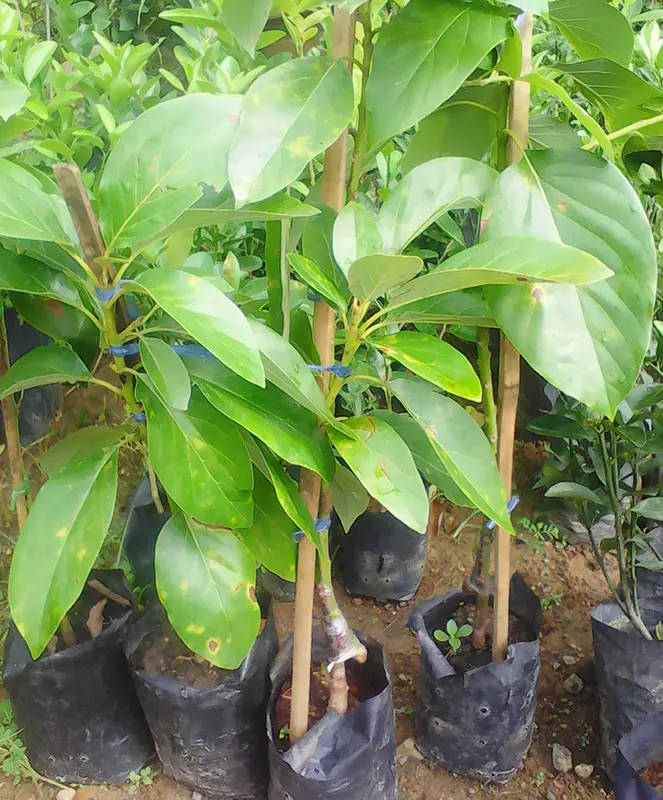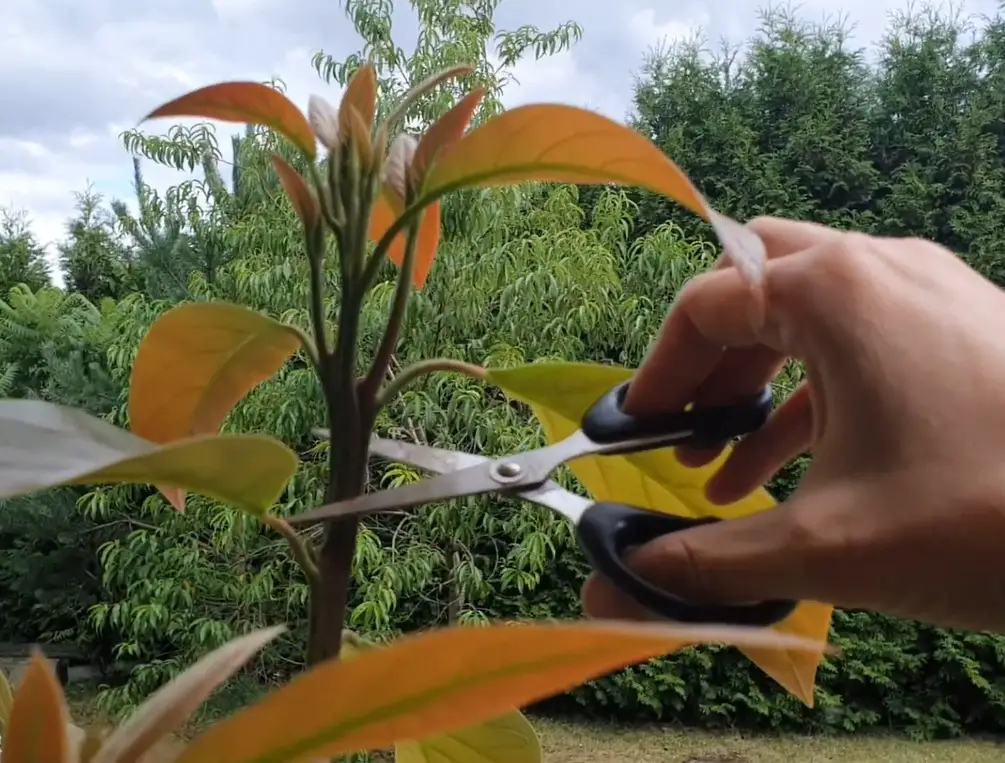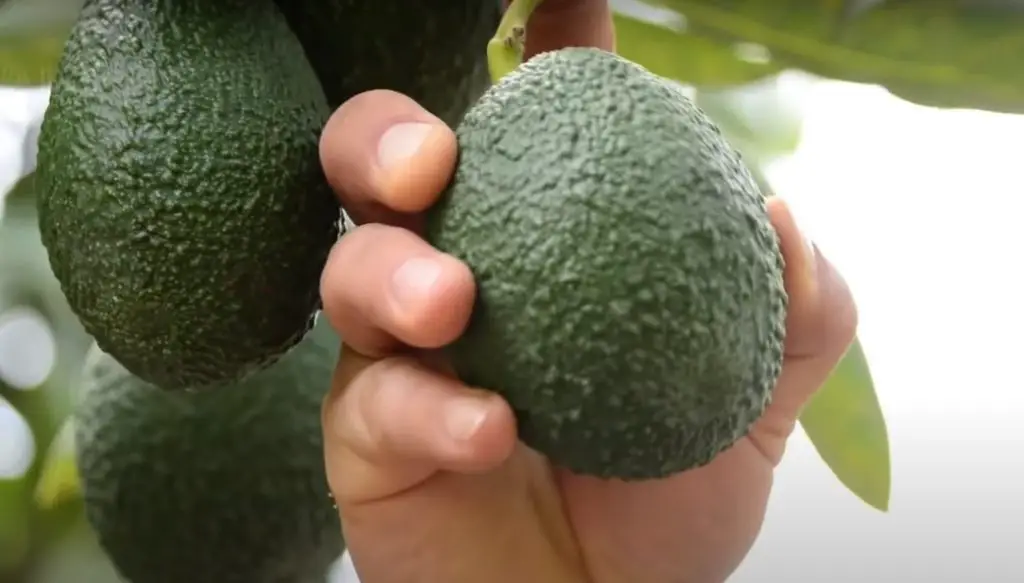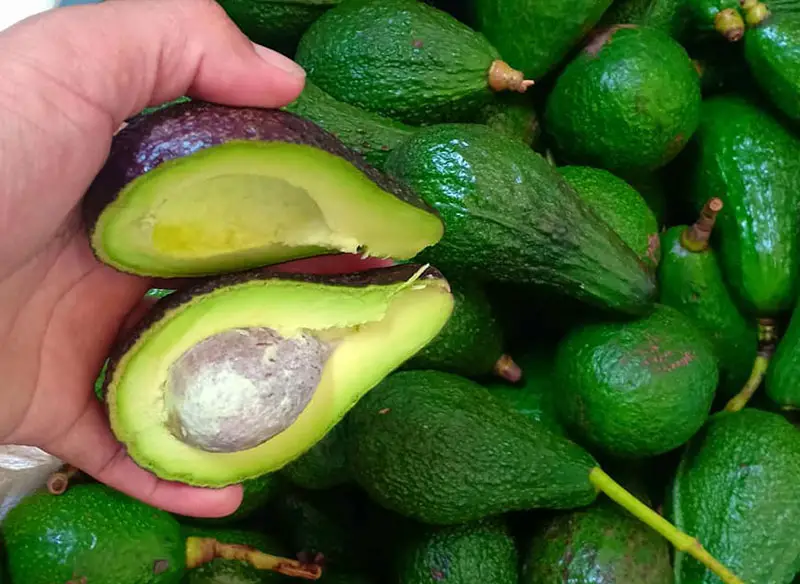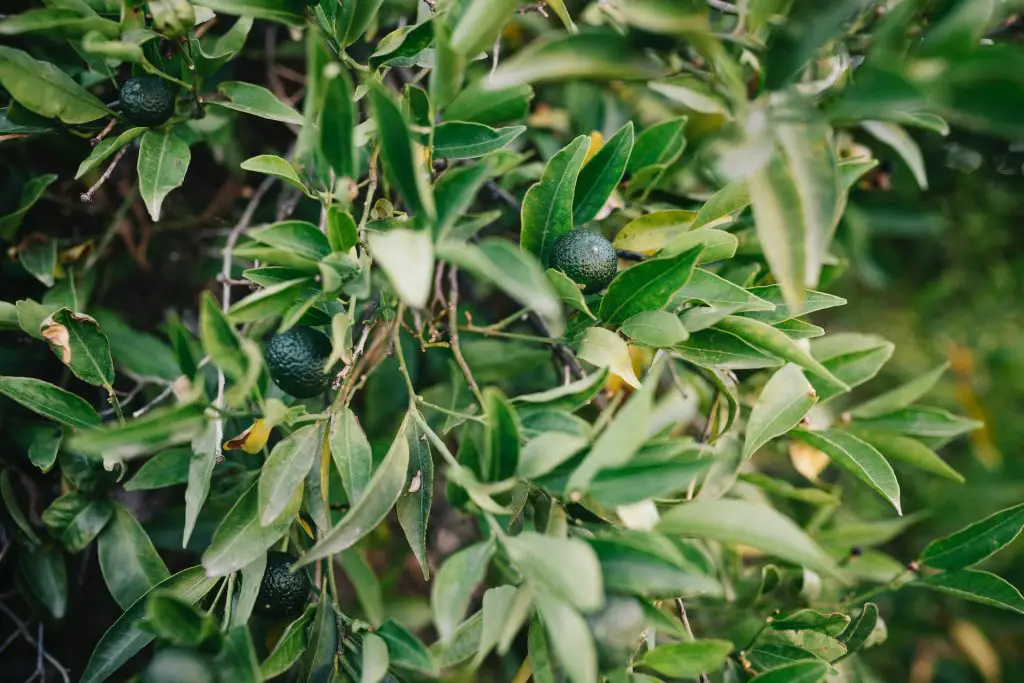Avocados are a power-packed superfood, packed with vitamins and minerals that can provide numerous health benefits. But how long does it take to grow an avocado? I’m here to tell you: not as long as you might think! Growing your own avocados is relatively easy, even for beginners who have never grown anything before. With the right care and attention, you could be harvesting your own home-grown crop of these delicious fruits in just a few years’ time.
We’ll explore exactly how long it takes to grow an avocado from seed to fruit – plus some valuable tips on getting started. From collecting seeds to planting them in pots or garden beds and caring for them along the way, I’ve got all the information you need to get those green beauties growing in no time at all. So if you’re looking for ways to increase your personal power by cultivating your very own crop of avocados。
We’ll also look beyond growing avocados from scratch and discuss other options available for those wanting ripe fruit more quickly such as buying sapling trees from nurseries or grafted varieties suitable for different climates. No matter what route you decide to go down when starting off your avocado journey there’s something incredibly rewarding about watching these incredible plants flourish under your careful stewardship.
Overview Of The Avocado Growth Cycle
Avocado trees are a rewarding and profitable addition to any garden. When understanding the basics of avocado growth cycles, growers can get better results with their plants.
The first stage in an avocado tree’s life is germination. Once planted, it takes between 7-10 days for seeds to sprout at 70°F soil temperature. Germinated seedlings should then be transferred outdoors or into larger containers within 4-6 weeks. This will allow them to stretch out and grow stronger roots as they enter their next phase — vegetative growth.
Vegetative growth occurs when trees reach around 1 foot tall and produce leaves on multiple branches. During this period, avocados need lots of sunlight (7+ hours daily) and water every 2-3 days for optimal development. Fertilizer application becomes necessary during this time too, usually about once per month until flowering commences. Flowering marks the beginning of the reproductive phase which typically begins after 12 months after planting.
Selecting The Right Avocado Tree Varieties
Did you know that there are over 500 varieties of avocados? With such a large selection, it’s important to pick the right variety for your climate and soil conditions. As an avocado-growing expert, I can tell you that selecting the correct tree is key to having a successful harvest.
The most popular commercial varieties in South Florida include Hass, Bacon, Gwen, Lamb Hass, Lula, and Pinkerton. Each offers its own unique characteristics – from the size and shape of the fruit to flavor profile and vigor of growth. However, if you live in an area with extreme temperatures or drought conditions, these may not be suitable choices. In this case, I would recommend trying some rare varieties which have better heat tolerance but may require special care during cold spells.
Once you’ve decided on a tree type, make sure you purchase trees from reliable nurseries that specialize in growing quality products. Choose specimens with strong branches and roots that look healthy and ensure they have been pruned correctly prior to planting them in the ground. This will help give your avocado tree the best chance at thriving.
Climate Requirements For Growing An Avocado
Once you’ve selected the right avocado tree varieties, it’s important to understand the climate requirements for growing an avocado. To ensure a successful harvest, avocados need full sun and warm temperatures throughout their growing season. They prefer day-time high temperatures between 70°F (21°C) and 85°F (29°C). At night, they should be kept between 55°F (13°C) and 65°F (18°C). Avocado trees are adaptable but must have mild winters without frost or freezing temperatures. In areas with cooler climates, you can use microclimates or coverings to extend your growing season.
Avocado trees also require plenty of water during their active growth period from spring to fall. Watering deeply once every week is ideal if there isn’t enough rainfall in your area. During winter months when the tree is dormant, reduce watering significantly since too much moisture can cause root rot and other diseases. Additionally, adding mulch around the base of the tree can help keep the soil moist and control weeds that compete for moisture and nutrients.
Ideal Soil Conditions For Growing An Avocado
Avocado growing is like a superpower – it takes time, dedication, and the right soil conditions. For an avocado tree to flourish and produce its famous fruit, you must create an environment that mimics its natural habitat as closely as possible. It’s almost magical!
Your soil should be well-draining but also retain some moisture so the roots don’t dry out too quickly. Sandy loam or clay loam soils are ideal for avocados because they provide good drainage while still holding enough water in their structure for the plant to access when needed.
If your soil isn’t ideal, consider amending it with organic material such as composted manure or peat moss. This will help balance the pH level of acidic soils and improve fertility levels. You can also add lime to raise the pH of overly alkaline soils if necessary.
You need to ensure that the planting area has ample sunlight exposure throughout the day – at least 8 hours per day is ideal – especially during the flowering season when pollinators need to get to work on those blossoms! With optimal soil conditions in place, your avocado tree will have everything it needs to thrive and reach peak performance.
Water Requirements Of An Avocado Tree
Watering is a key component of successful avocado tree care. An established avocado tree needs about one inch of water per week, either from rainfall or supplemental irrigation. It’s important to keep the root zone consistently moist but not soggy, so check your soil moisture before watering and adjust as necessary.
During extended periods without rainfall, you may need to irrigate more often in order to maintain healthy growth. Young trees should receive light, frequent applications instead of heavy infrequent douses.
When it comes to selecting an irrigation method for your avocado tree, there are several options available including drip systems, sprinklers,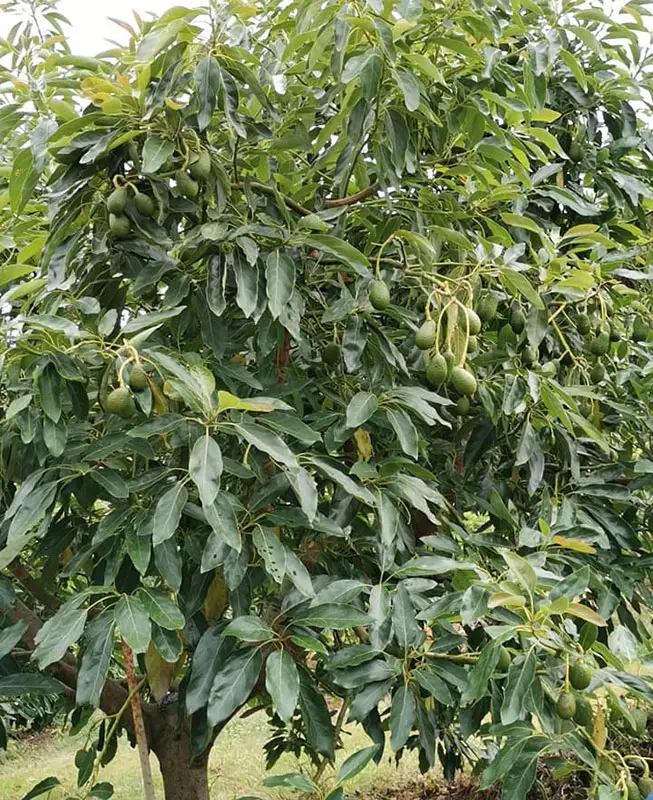 and hand-watering with a hose or bucket. Drip systems provide an efficient way to apply precise amounts of water directly to the base of the tree and can be installed by professional landscapers or do-it-yourselfers.
and hand-watering with a hose or bucket. Drip systems provide an efficient way to apply precise amounts of water directly to the base of the tree and can be installed by professional landscapers or do-it-yourselfers.
Sprinklers work well when used judiciously; however, they can be wasteful if misused and cause uneven distribution around the trunk leading to shallow rooting behavior which exposes roots to drought stress. Hand-watering allows for greater control over how much water is applied where needed most at any given time during the season.
Fertilization Needs Of An Avocado Tree
Fertilizing an avocado tree is essential for its health and maximizing production. The key to successful fertilization lies in understanding the nutrient needs of your specific soil type, as well as knowing when to apply it.
Generally speaking, avocados require monthly or bi-monthly feedings with a balanced fertilizer that contains equal parts nitrogen, phosphorous, and potassium–known as N-P-K–along with trace elements like iron and magnesium. Depending on your local soil conditions, you may also need supplemental organic matter such as composted manure or blood meal.
Timing is important when it comes to feeding; experts recommend doing so during the early spring months before flowering begins and then again shortly after the fruit set has occurred. During this time period, avoid overfertilizing since too much food can damage delicate roots and foliage.
You need to take care not to let fertilizer come into contact with plant tissue directly since this can result in leaf burn. With the thoughtful application, however, you’ll be rewarded with healthy growth throughout the season.
Pruning Of An Avocado Tree
Now that you have learned the fertilizing needs of an avocado tree, it’s time to discuss pruning. Pruning is critical for maintaining a healthy avocado tree, as removing dead or diseased branches helps promote growth. It’s important to note that over-pruning can stunt your tree’s ability to produce fruit. Therefore, it should only be done when necessary and with care.
It’s also important to train your avocado tree while it’s still young. This involves carefully shaping the trunk and limbs into desired forms so they stay upright and balanced, rather than sprawling out in all directions. Doing this correctly ensures your tree will bear more fruits in future seasons. And by using stakes or cages during their early stages, you can prevent damage from strong winds or other external forces.
Harvesting And Handling Avocados
Harvesting and handling avocados is an art. It’s like a dance between the grower and the ripe fruit, with each step carefully timed for maximum flavor and shelf life.
The first key to harvesting avocados is timing. For Hass avocados, the best time to pick them is when they are slightly soft but still firm enough that you can easily hold it in your hand without damage or bruising. This usually takes 3-5 months after flowering depending on variety and climate.
Once harvested, proper handling techniques will ensure the top quality of your crop. Here are some tips:
- Allow unripe fruits to ripen at room temperature before storing them in a cool place away from direct sunlight.
- Handle all fruits gently during transport as any bruising may cause spoilage.
- Separate damaged and overripe fruits immediately so they do not affect those around them.
- Keep track of temperatures throughout the storage process to avoid freezing or excessive heat exposure
These precautions should be taken whether selling directly from the farm or shipping long distances – both play a role in maintaining product integrity until purchase by the consumer. From there, it’s up to the buyer to store and enjoy their fresh, flavorful avocado.
Common Pests And Diseases That Affect Avocados
In order to keep your avocado tree healthy, you should be aware of the most common pests and diseases that attack it. That can only be achieved through routine tree inspections that will catch any issues with your trees in their earliest stages. Aphids, mealybugs, thrips, mites, scale insects, and whiteflies are the most common pests that attack avocado trees.
As a result of these pests’ feeding habits, the foliage turns yellow or wilts and fruit production decreases. Eliminating these pests before they become a major issue is crucial. They can be deterred by spraying with insecticidal soap or horticultural oil, though chemical pesticides may be required if the infestation is particularly bad.
Root rot caused by Phytophthora cinnamomi and stem blight caused by Botryosphaeria dothidea are two diseases that can severely damage avocado trees if they are not treated promptly.
It’s important to keep an eye out for other fungal problems, like anthracnose and leaf spot, which can also cause defoliation and yield losses in avocado trees. In addition to spraying fungicides as needed, routine pruning of affected areas is generally recommended.
Care Tips For A Healthy Avocado Tree
Growing a healthy avocado tree requires more than just luck. It takes dedication, effort, and knowledge to ensure that your tree thrives in the environment it’s planted in. With careful attention and proper care, you can give your avocado tree the best chance of success.
You should choose an appropriate spot for planting. Avocado trees prefer well-draining soil with full sun exposure. Selecting a location away from strong winds is also important, as this could damage young leaves or branches if exposed for too long. As avocados don’t tolerate cold temperatures, select a site that won’t be affected by frost during winter months.
It’s essential to water regularly throughout the growing season – usually once every week or two depending on rainfall amounts and atmospheric conditions like humidity levels and temperature range.
Fertilizing should occur at least twice a year; once when buds have formed but before fruit appears, and then again after harvest when new growth begins to appear. Pruning is also recommended each spring to remove dead wood and promote vigorous new shoots while helping maintain its shape into maturity.
How Long Do Avocado Trees Live
There is a common belief that avocado trees can live for up to a century if given the right care. However, it takes an avocado tree quite some time to mature, typically anywhere from 5 to 13 years. Soil type, temperature, water availability, and other environmental factors all play a role in determining the exact amount of time.
For example, if you’re located in a warmer climate with plenty of sunshine, your avocado tree may take less than five years before producing fruit. However, in a cooler climate with less sunlight, your avocado tree may take more than a decade to mature and produce fruit.
In addition to the length of time needed for an avocado tree to mature, there are several things that will determine how successful its growth is. Proper pruning techniques help control size while also allowing light and air into the canopy which increases fruiting potential. Other important practices include fertilizing regularly and providing adequate moisture during dry periods or when extreme temperatures occur. Of course, regular pest management helps protect against disease or insect damage that might otherwise stunt growth or reduce yields.
With all these considerations taken into account, growers should have realistic expectations when it comes to their own avocado trees and plan accordingly. Once established though, they provide rewards for many years – some even lasting generations! With proper care and attention given throughout its life cycle, an avocado tree can become a beloved part of any garden space – one with ample opportunity for enjoyment from both harvests as well as shade from its sturdy branches.
How Big Does An Avocado Tree Get
The size of an avocado tree can vary greatly depending on the variety and growing conditions. Generally, they will reach maturity at 8-10 years old and grow to between 10-50 feet tall when planted in optimal soil and climate conditions.
Height | Width |
10 - 30 ft | 5 - 15 ft |
30 - 50 ft | 15 - 25 ft |
Avocado trees have a wide range of shapes that depend on where you plant them. They may be upright with a single trunk, spreading outwards from one base or multiple trunks branching off from a main stem. If grown in the ground, their root system is extensive and should not be disturbed for optimum growth potential. Additionally, pruning needs to occur regularly in order for the tree to maintain its desired shape and vigor.
In terms of foliage color, avocados are evergreen shrubs that typically produce bright green leaves throughout the year. However, some varieties such as ‘Hass’ can display yellowish hues during winter months due to lack of moisture. In addition, flowering happens once per year usually starting around late spring or early summer which produces small white flowers which eventually turn into fruits if pollinated properly.
Overall, understanding how big your avocado tree grows is essential for successful cultivation so make sure to research your specific type before planting it! With this knowledge in hand, you’ll now be able to maximize the space available while ensuring healthy growth habits over time.
How To Make Avocado Tree Bear Fruit Faster
It takes some know-how and effort to get an avocado tree to bear fruit, but once it does, you’ll be glad you made the effort. To begin, you must learn what conditions your tree requires for optimal growth. Avocado trees thrive in sunny locations with plenty of organic matter-rich, well-drained soil.
Make sure to fertilize at least twice a year with a balanced fertilizer and water regularly during dry periods to promote healthy growth and abundant fruiting. Pruning the tree on a regular basis will help keep it at a manageable size and shape, and will also increase airflow for more abundant flowering.
The next step is pollination. If you are growing an avocado variety that requires cross-pollination from another tree, then this must be done manually or by encouraging natural pollinators such as bees and other insects.
Another key factor for successfully bearing fruit on your avocado tree is patience; avocados take between three to five years before they start producing fruit! But once your tree does begin bearing fruit, there are several measures you can take to increase yields including thinning out small fruits and removing diseased branches or leaves immediately.
For How Long Do Avocados Need To Ripen?
It’s important to understand how long avocados take to ripen before planting your own tree. A quick primer is as follows:
Avocados Varieties: Different varieties of avocados have different maturation times; for example, Hass avocados can be harvested after 4 months, while Bacon avocados can take up to 12 months to reach full maturity.
Conditions: if you live in a warm climate where the sun shines most days, growing an avocado will take less time than in a cooler climate. Adding a healthy dose of fertilizer to the soil on a consistent basis will also hasten the process.
Tree’s Age: the tree’s age matters, as a younger tree may need more time than an older one to reach full fruit production potential as it matures and gains strength from being in its environment. However, regardless of age or variety, when grown in ideal conditions, you can typically anticipate a harvest in about 6-8 months.
Ripeness indicators: Once you have determined that the avocados have been on the tree for an adequate amount of time, you should check for ripeness indicators such as a change in color (usually darkening), softness when gently squeezed (not too hard!), and aroma (should smell sweet). Choose wisely if any of the above qualities appeal to you.
With this knowledge in hand, anyone can grow their own avocados without worrying that they will have to wait an eternity for a tasty treat; just don’t wait too long! Keep in mind that picking them before they are ripe will result in bland tasting fruit while picking them after they have reached full ripeness increases the risk of damage or even rotting.”
Conclusion
It’s gratifying to watch an avocado tree mature into a fruitful tree. As long as you have the right information and put in the time, you can soon be eating delicious avocados. First and foremost, you need to make sure that you’ve chosen a climate-appropriate variety and that your soil is in good shape. After you’ve planted your tree, give it plenty of water and care to ensure it thrives.
It usually takes avocado trees three to four years to start producing fruit. Some trees may produce fruit earlier or later than this average estimate due to climate factors like temperature and precipitation. However, with attention to detail during the growing stages (such as pruning and fertilizing), you can significantly hasten the development of your avocado tree and shorten the duration of the production cycle.
Overall, if you prepare well and tend to the tree from the start, you will soon be enjoying the benefits of homegrown avocados. After all your hard work, you deserve to indulge in their velvety smoothness and distinctive flavor.

